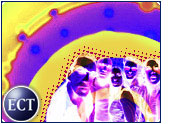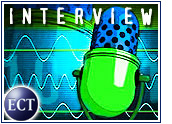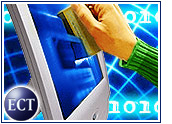
As one of the Internet’s largest providers of hardware and software, Sun Microsystems (Nasdaq: SUNW) helps customers “dot-com” their enterprises and computer environments. Since the company’s inception in 1982, the four-person startup has built up a workforce of more than 37,000 employees in 170 countries, and a pro forma net income of US$1.45 billion for the fiscal year 2001.
Scott Anderson, Sun’s director of eMarketing, recently talked with the E-Commerce Timesabout how Sun’s online marketing efforts leverage the company’s vision of technologyworking for the consumer, rather than the other way around.
ECT: What advertising advantages does the Internet offer that other media do notprovide?
Anderson: I believe that the advantage it has to offer is interactivity. It’sthinking about the value we can offer customers and listening to them, which isdifficult to do in traditional media. As we evolve a dialogue with our customers,they are giving us permission to give us information about them and we can then learnabout them in the process and give them better solutions for their needs.
Customers and users are accomplishing tasks online. There are surfers and scuba divers,surfers scan, and the divers are trying to accomplish a task and go deeper.The advantage (of the Internet) is you can offer viable solutions for users of theWeb as they are trying to accomplish a task. The challenge is to understand the tasks they are trying to accomplish and offer them a solution at a time when they arelooking for one.
It’s understanding what customers are trying to accomplish, and offering them whatthey need when they need it, and listening to what they have to say. It’s bi-directionalcommunication as opposed to a shotgun blast of communication.
Looking to Learn
ECT: What steps, or series of steps, do you take when planning an onlineadvertising campaign?
Anderson: The first is to understand the objectives we’re trying to achieveand then to understand what value we can offer to the audience. After that, we think through all the different vehicles we can use to achieve the objective. As we’re goingthrough the campaign, it’s really measuring at an aggregate level what’s happening,how it’s happening, and how we can offer more value.
In the end our metric is: did we achieve our objective and how effectively, and whatdid we learn form a particular campaign that we can carry forward?
ECT: Should an online advertiser choose many sites on which to advertise — or spend the same amount for a larger buy on one site?
Anderson: It’s my opinion that you can achieve critical mass with your audienceby partnering with a more limited number of sites and then doing more with them. I’vechallenged the sites we’re working with to think beyond just advertising and think howtheir users are trying to achieve tasks, as well as how Sun can be a part of thatsolution; it could be banner ads, an area to set up product comparisons, a Sun searchengine, etc.
You increase your capability to do that by consolidating your media dollars with fewersites and doing more with them.
Dollar Prioritizing
ECT: What process do you use to determine how much of your overall advertisingbudget is allocated to a particular site?
Anderson: It’s based on the objectives of any particular campaign or dialoguewe’re having. We understand our audience, have a relationship with the site, anddetermine the highest probability of where our potential customers will be atany given point in time. We then put our dollars where we believe the highest probability is for them to be.
ECT: What are the biggest challenges of marketing via interactive media?
Anderson: The biggest challenge is to move from the mindset of traditionalmarketing to this concept of dialogue. We’re trying to move from campaign-basedthought to an ongoing discussion, and when you do that you need to consider customerneeds and what you learn from customers as they tell you new things.
It’s also being able to provide more value added content not only now but in the futurefor those customers — it’s the difference between single-shot marketing versus ongoing.
Dialogue Box
ECT: How well-suited is the Internet for branding campaigns?
Anderson: I think for the entire Internet, and particularly for Sun, the brandlies in the Internet experience. Sun’s brand is being the leader in innovation, thatwe have a sense of humor, that we’re a little edgy, scrappy and in everything we do,our brand needs to play through in that experience.
We want to be known as the first in new technology, so that may [affect] how we thinkabout media buys, how we communicate with customers on our own site, etc. [Internetbranding] is about establishing a dialogue, providing customized views, and it’sreally about integrating all our communications and making sure we provide all ourcustomers a consistent story/message that supports Sun’s brand.
Another area that we feel is powerful for our brand is working with sites thatare powered by Sun, that have a statement saying they are powered by us, becauseSun is the backbone of a lot of Internet sites and it helps to advertise that on alot of world-class sites. Sun’s brand is also about open architecture and integratable solutions, so we also seek to highlight our partnerships online typically throughco-marketing activities.
Please click here for Part 2 of the interview.![]()




























































Social Media
See all Social Media